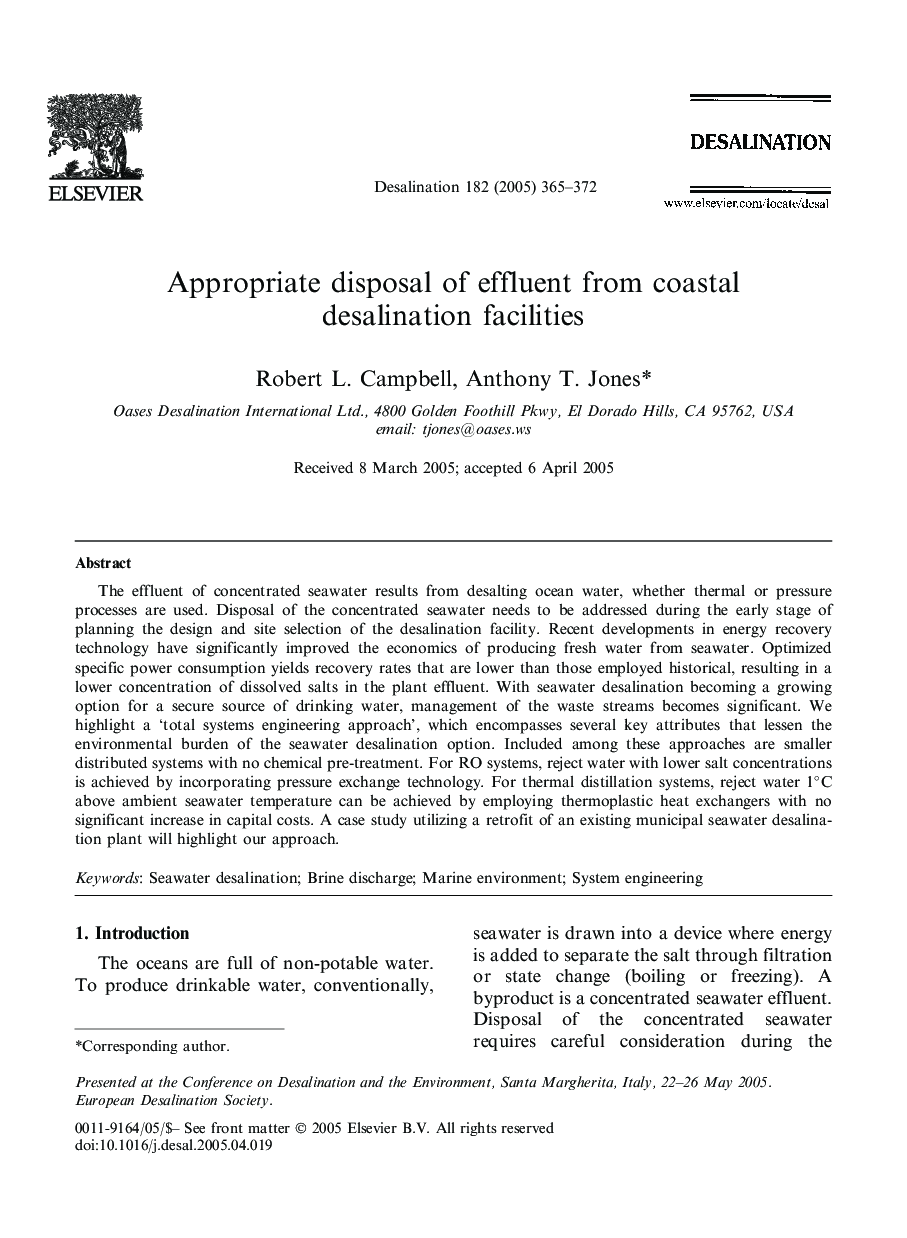| Article ID | Journal | Published Year | Pages | File Type |
|---|---|---|---|---|
| 9680995 | Desalination | 2005 | 8 Pages |
Abstract
The effluent of concentrated seawater results from desalting ocean water, whether thermal or pressure processes are used. Disposal of the concentrated seawater needs to be addressed during the early stage of planning the design and site selection of the desalination facility. Recent developments in energy recovery technology have significantly improved the economics of producing fresh water from seawater. Optimized specific power consumption yields recovery rates that are lower than those employed historical, resulting in a lower concentration of dissolved salts in the plant effluent. With seawater desalination becoming a growing option for a secure source of drinking water, management of the waste streams becomes significant. We highlight a 'total systems engineering approach', which encompasses several key attributes that lessen the environmental burden of the seawater desalination option. Included among these approaches are smaller distributed systems with no chemical pre-treatment. For RO systems, reject water with lower salt concentrations is achieved by incorporating pressure exchange technology. For thermal distillation systems, reject water 1°C above ambient seawater temperature can be achieved by employing thermoplastic heat exchangers with no significant increase in capital costs. A case study utilizing a retrofit of an existing municipal seawater desalination plant will highlight our approach.
Related Topics
Physical Sciences and Engineering
Chemical Engineering
Filtration and Separation
Authors
Robert L. Campbell, Anthony T. Jones,
